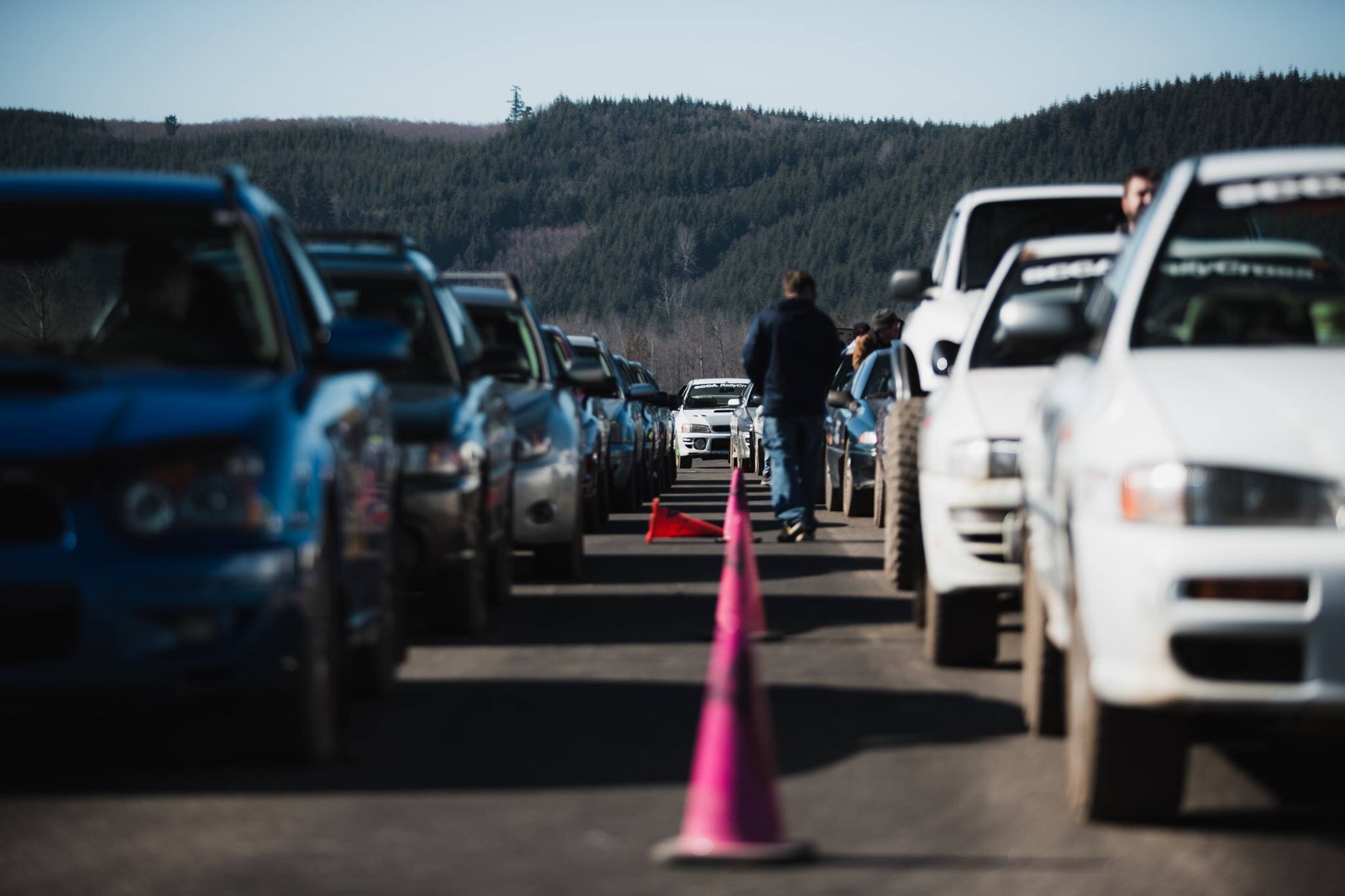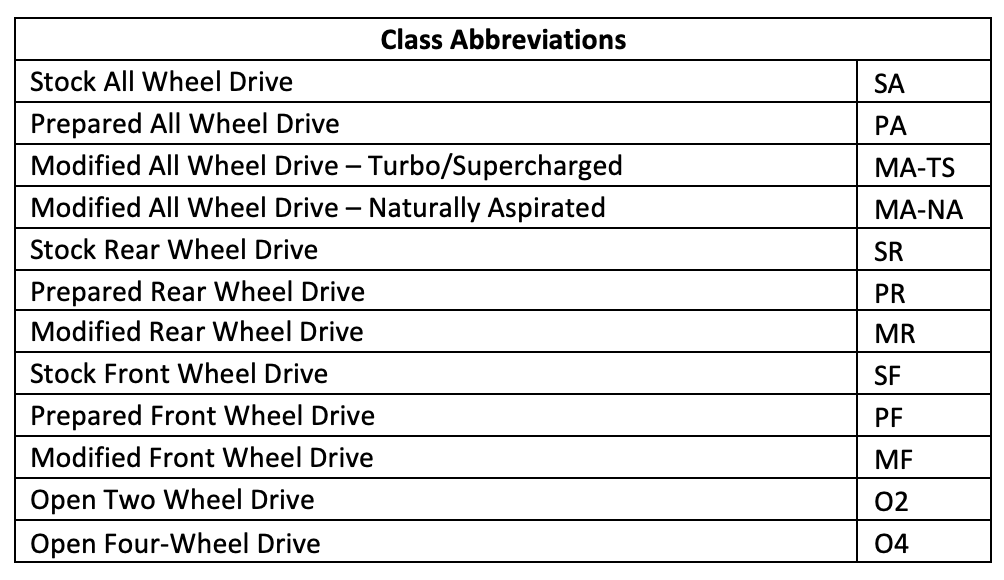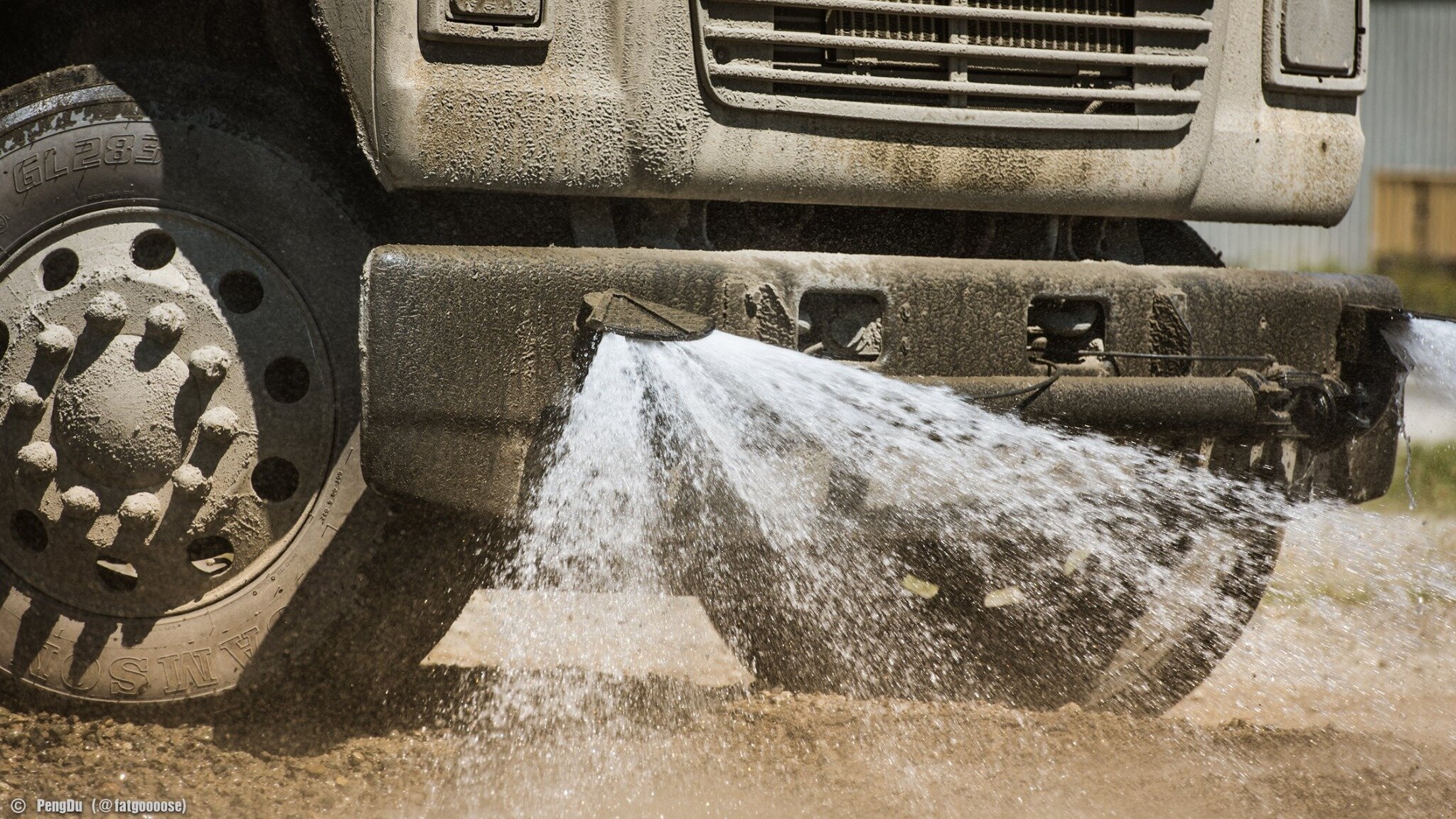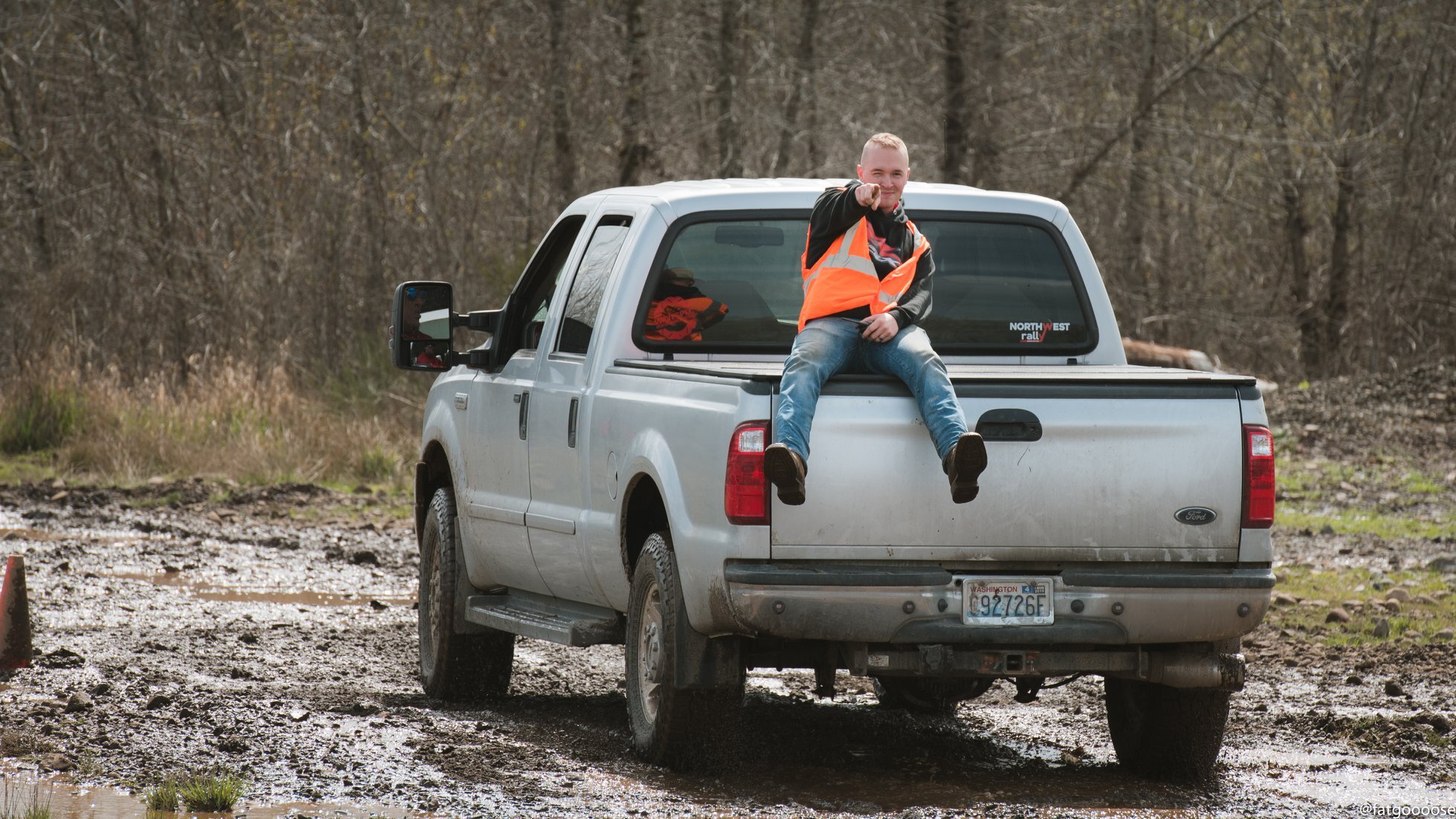Welcome To Rallycross
Welcome to Rallycross! We are so glad you are here. You have either signed up for your first event or are thinking about it, so use this handy guide to help you get ready.
First things first, the car.
You might be asking yourself, “What kind of car do I need to have to race?”
Even if you have big dreams of buying or building a rally car, our top suggestion is to first race that car that you already have. After running a few events, you will see what the different classes are like and what kind of cars are out there. Once you are more comfortable, you can make a more informed decision about a larger buy or build.
No matter what kind of car you bring, it needs to meet the basic requirements set out in the rules (check out the Eligible Vehicles and Vehicle Inspection sections). The requirements are primarily focused on safety with items such as:
Vehicle must be wider than it is tall, to prevent roll-overs
Seat belts must be functional
General condition of the vehicle must be safe; for example, no excessive rust is permitted
No matter what class or car you’re racing, we recommend some basic things like a skid plate, mud flaps, a fresh oil change and a tune up.
Choosing your Class
Competitors are broken down into groups so that you are competing against similar vehicles. It is your responsibility to know the correct classification for your car and to register accordingly. A full description of all of the classes are listed in the rules under Vehicle Classification but here are the basics.
Drivetrain: Classes are broken up into front wheel drive, rear wheel drive and all-wheel drive.
Modification: Within the drivetrains, you can select the level of modification that matches your vehicle. For example, if you are racing your daily driver, you will likely compete in the Stock Class. Stock means that the vehicle has the same setup as when it came off the factory floor.
This list shows all of the possible classes and you will want to review the rules to choose the one that is right for you.
If you are unable to identify which class is right for you, send us a message! We are always happy to help; it is important that you determine your class prior to race day. Making changes on race day can cause delays.
Registration
Not all clubs operate the same way but for any Northwest Rally Association event, you must register online prior to race day. Events can sell out quickly so you will want to follow the organization pages on Facebook and set reminders for when registration opens.
We recommend logging into MotorsportReg and creating a profile now so that you can sign up for races quickly. When registration opens, you will follow the event link, select your car and your class, the sign up.
Again, not all organizations are the same, but we run payments the day after registration closes, which is posted in the event details on MotorsportReg.
How to Prepare
Leading up to race week, it is important to get your ducks in a row so that you aren’t rushed when it is time to head out. Plan ahead for things like trailer rentals and packing. Check out our Rallycross Packing List for specific recommendations.
Read the rules and any event communication that was sent via email. You will always receive a competitor email the week prior to an event with some details about what to expect. If you did not receive it, email us to get a copy (and check your spam folder). We do our best to get all the information to you in advance, but you have to do your part and read it!
Watching videos and looking at pictures of the venue or previous events will help you know what to expect. Some simple things you can do to get acquainted are:
Look at past year’s events on the organization’s Facebook or Instagram pages. Many competitors/media people will upload their photos to the event page.
Search online for the venue name + rallycross. There are plenty of drivers with their own YouTube channels that post their in-car videos.
Ask! Groups like the NorPac Rally Group on Facebook or your local rally organization’s page should be a great place to ask questions about a venue’s surface and amenities.
Plan ahead and give yourself extra time. Most races are not close to home and you want to be prepared – give yourself time for unexpected issues like a flat tire and for planned stops such as fueling up. You will have a much smoother experience if have identified things like the closest gas station to the venue. If you are towing your car to the event, remember that everything takes longer with a trailer! Know the event schedule and make sure you arrive with enough time to be ready to race.
What to Expect on Race Day
The most important thing to know about race day is the schedule and what’s required of you prior to the race starting. At our events, you must pass tech inspection, check in at registration, and attend the drivers meeting in order to compete. But there’s more that you should do before racing like walking the course at least once (the more times the better). Make sure to also check your tire pressure and have a snack (trust us, it’s easy to forget to eat once you’re there).
Parking/Paddock
When you arrive at the venue, you will sign a waiver and be directed where to park and set up for the day. You will want to be mindful of others and create a compact area for you and your car. Other drivers will be there setting up so take a moment to say hi and introduce yourself. No one is a better resource for your first race than other competitors.
Technical Inspection
Tech inspection is where we make sure your car is safe and ready to race. A full description of the inspection can be found in the rules under Vehicle Inspection. Here are some basic steps to prepare:
Unload all loose items out of your car except for your helmet.
Put your race wheels/tires on your vehicle (if they aren’t already).
Make sure your numbers/class are on both sides of your vehicle. Our Guide to Rallycross numbers breaks down how to get those right.
Apply any required stickers (event sponsor stickers, windshield banners, etc). If you are unsure what is required, you can ask your neighbor or ask at the registration tent.
Once you have passed inspection, you will be given a sheet to take to the registration/timing tent to check in. At check-in, your drivers license will be checked, race numbers and class confirmed and you will be given an RFID time card and sent on your merry way!
Walk the Course
Once you are checked in, take some time to walk the course and get familiar with it. Rallycross courses are marked with cones and the way the cones are laid out, tell you which way to go (just like an autocross course). We highly recommend taking a minute to review our Guide to Reading Rallycross Cones.
Walking the course gives you the chance to see the course segments and elements at slow speed and think about how you’ll approach each section and tie it all together. Most experienced competitors will gladly do their course walk with you and show you some areas to pay attention to.
Drivers Meeting
In order to race, you MUST attend the drivers meeting. We will explain how the day will go, review basic safety, procedures and talk about anything that you need to know for that particular race.
Race Time!
Rallycross events are structured in a run/work format. This means that you will spend part of the day racing and part of the day working the course. Check out our guide to course working for a bit more info.
The run groups are by class – you will always race with other people in your class. When it’s your race time, you will bring your car to the grid area and follow the grid chief’s instructions for where to line up. Pay attention to your line number, who is in front of you and who is behind you. You must be at the line when it’s your time to race so knowing where you are supposed to be is priority #1.
When it is your turn, you will be sent up to the start line. Your timing card will be scanned and the start manager will give you a countdown to when you start. At this point, you have done all the hard work so take a deep breath, get comfortable, and remember your plan from when you walked the course.
Once you cross the finish line, come to a safe and complete stop at the stop sign then proceed back to grid. You will want to line back up in grid in the correct line. Depending on the course length, you will usually get between 4-6 runs.
Some other things to note:
Your race results are automatically tracked and you will be able to see it on your phone once you have finished.
When you are not racing, your speed should be kept to 10 mph in order to keep everyone safe.
Breaks and Lunch
In between your runs, take a drink of some water and or electrolytes, use the bathroom as needed but don’t venture far from your car. If you are not ready when it’s your turn to race, you will miss that run and receive a DNF on that lap.
Most venues will require a bit of a course touch-up about halfway through your session. This means that you’ll likely get a 10-15 minute break in the middle of your run group.
You can use the times between runs or during tractor breaks to make small tweaks to your car or change tires, if needed. As long as you’re ready when it’s your turn to race again, you’re good to go!
All events will have a break for lunch. The schedule can vary from event to event so be sure to read the schedule and plan ahead.
Awards
At the end of every race, we have an awards ceremony. This is a chance to relax and celebrate after the event and support your competitors. We also use this time to make announcements about upcoming events.
Loading & Cleanup
Once awards are over, load up your paddock area and your car. Clean up your area so that you are leaving no trace and pick up any garbage you see, even if it’s not yours. Rallycross competitors are known for leaving venues in better condition than they found them!
Knowing that you are tired and have had a long day, double-check everything before heading out – trailer hookup, wheel lug nuts are tightened (if you changed your tires at the end of the day) and you have all of your important personal items (keys, wallet, phone). Because we rent the venues, there is no lost and found or way to get things back if they are left behind.
There is a lot that goes into each race and showing up prepared and informed for what the day hold is the key to success. Making it to the start line is a great first step to getting into rallycross.






